Breguet 1050 Alize 1G,
ALM & ALH
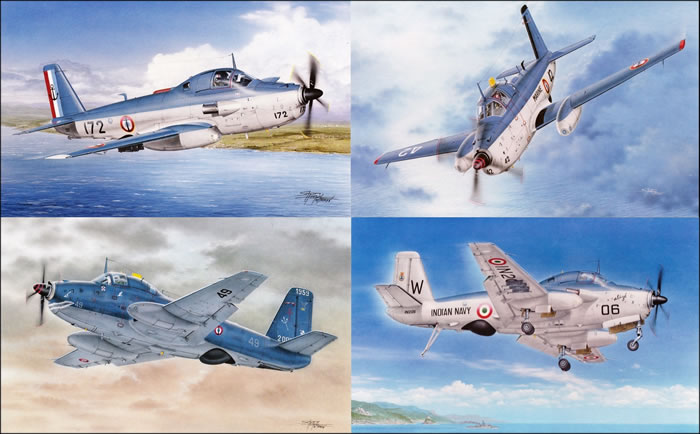
Azur serie FRROM, 1/72 scale
S u m m a r y : |
Catalogue Number: |
FR0028 – Alize 1G France
FR0029 – Alize ALM
FR0030 – Alize ALH
FR0031 – Alize 1G India |
Scale: |
1/72 |
Contents & Media: |
Common to all four kits, with some surplus parts in each case: 3 clear and 196 grey styrene parts of which 13 are surplus to all boxings, and 30 are related to weapons applicable to the Alize 1G & ALM boxings. Each boxing has 3 decal options. |
Price: |
Available on-line from these stockists: |
Stockist |
FR0028 |
FR0029 |
FR0030 |
FR0031 |
Hannants |
£29.16 |
£29.16 |
£29.16 |
£29.16 |
Hobby Mania |
Au$57.00 |
Au$57.00 |
n/a |
Au$57.00 |
Mega Hobby |
US$52.80 |
n/a |
n/a |
n/a |
Aviation Megastore |
€37.15 |
€37.15 |
€37.15 |
€37.15 |
Review Type: |
First Look. |
Advantages: |
The best 1/72 scale Alize by far, wide range of markings options, and nicely detailed. |
Disadvantages: |
None of any consequence. |
Conclusion: |
FRROM has given us the best Alize kits in the “One True Scale” by far, with a range of boxings covering several interesting variants and colour schemes. The quality of moulding and detail provided is very good, and should result in a very nice replica when finished. I have every reason to expect that the kits will build with few difficulties. I for one am pleased to have a good kit of this interesting aircraft; and I hope others feel the same way so that FRROM is encouraged to consider releasing more subjects only covered by Mach 2 until now. All four boxings are highly recommended. |
Reviewed by
Mark Davies

Eduard's 1/48 scale Bf 108
is available online from Squadron.com for only USD$23.07!
The Breguet 1050 Alize carrier-based Anti-Submarine Warfare (ASW) aircraft was derived from the Breguet 960 Vultur; an unsuccessful attack aircraft design that was limited to only three prototypes. Three prototypes and two pre-production machines were built, with the first delivery of a production machine to the French Navy being made on November 15, 1957.
The Alize replaced the Grumman Avengers in the submarine hunter-killer role, with 6 Flotille (6F) being the first squadron to receive the Alize in 1959. 6F served as an operational training squadron, familiarising both flight crews and support personnel with the new aircraft.

Alizes served with 4F, 6F, and 9F, as well as various ancillary units including 2S, 3S, 10S, ERC, EPV and 59S. Embarked aboard the carriers Arromanches, Clemenceau and Foch, Alizes participated in many exercises like Atlantis 69 and Alligator III, and on operations including Saphir in the Gulf of Aden, Olifan over Lebanon, Prometheus and Salamandre in the Gulf of Oman, Balbuzard in the Adriatic Sea, and Trident over the former Yugoslavia.
The Alize underwent its first upgrade between 1966 and 1970 with no change in model designation; although some aircraft serial numbers were re-assigned in the 100 series, meaning for example that aircraft 45 became 145. Later, between 1978 and 1983, thirty Alizes were modified to a standard designated as Alize Modifie (ALM). These machines were equipped with a new Thompson-CSF DRAA-10A Iguane radar using impulse compression, an ARAR 12A radar detector, an Omega Equinox navigation system, and a system to analyse data emitted by acoustic buoys.
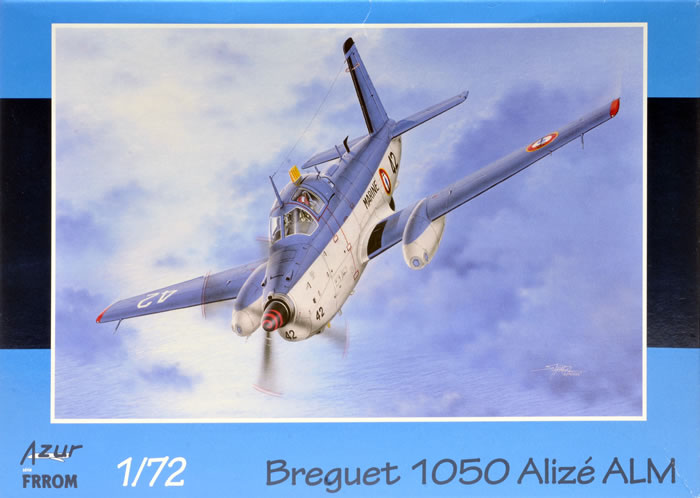
The ALMs were used in the SAR, anti-surface, and anti-submarine roles. They served with Flotilles 4F and 6F, particularly in Olifan missions over Lebanon. In one mission, on February, 1984, ALM nr 60 of 4F was struck by a missile launched from a Syrian fighter launched; but nevertheless it made it safely back to the Clemenceau.
Between 1996 and 1997, fifteen ALMs were further modified to Alize mis a Hauteur standard (ALH). The main improvements were to the automatic pilot, navigation and ESM systems, plus the addition of a Thomson-CSF TTD Chlio FLIR camera in the left wing nacelle. These modified planes no longer carried external weapons. The ALH-standard Alizes served only with 6F. Any unmodified airframes were identified as Alize 1st Generation, to distinguish them from those with later upgrades.
At end of its service life the Alize was used for coastal and sea surveillance. The last Alize (ALH) retired from service with 6F in 2000, although a few remained to be seen on some French bases after this date. Alize number 59 was returned to flight status and given the civil registration of F-AZYI.
India bought fourteen Alizes for service aboard the carrier INS Vikrant. Alizes fought in the Indo-Pakistan conflicts of 1965 and 1971, when they were involved in the hunt and destruction of one Pakistani submarine, but also lost an Alize (serial number IN203). Indian Alizes were all first generation airframes, and served from 1960 to 1991.
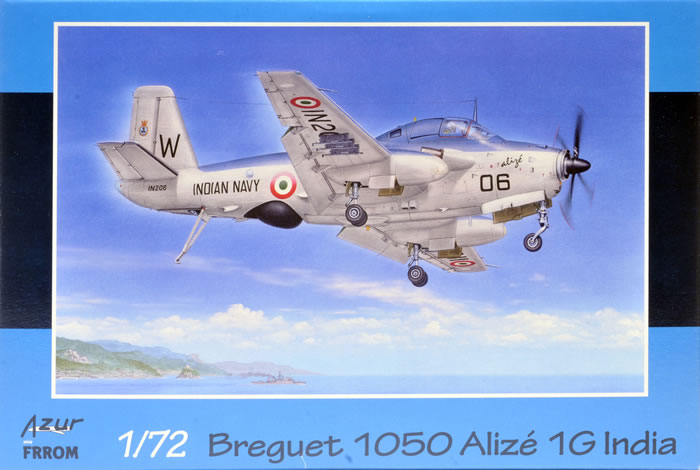
Attempts to export the Alize to Brazil, the Netherlands, Peru, Israel and Indonesia were pursued but did not lead to sales.
Source: FRROM kit histories
Previous 1/72 Alize Kits
I am aware of only one previous kit of Alize in the “One True Scale”, this being by the French limited run kit company Mach 2. First released in 1988, Scale Models magazine of Jun 1988 described it as being below the standards of Pegasus and Aeroclub, but above Merlin; no doubt this was fair assessment. I have seen a source suggesting that Mach 2 released a new tooling 2000. Retooled or not, I cannot think of any subject that Mach 2 has kitted that most modellers are not grateful to have an alternative released by another manufacturer.
Azur-FRROM, whose tooling is done by Special Hobby, seems the perfect choice to tackle this somewhat esoteric French subject. In this case they were aided by enthusiasts with access to a real example who took photos and measurements to assist with the kit’s mastering.
The kits each come packed in a top-opening box with attractive art-work on the lid. The main sprues are in a re-sealable bag, with the clear sprue and decals further enclosed in their own plastic bags.
The instructions are A5 format booklets printed in colour on glossy paper with a brief aircraft history in French and English. They include a parts map that identifies surplus parts and use diagrammatic assembly stages that are clear and easy to follow.
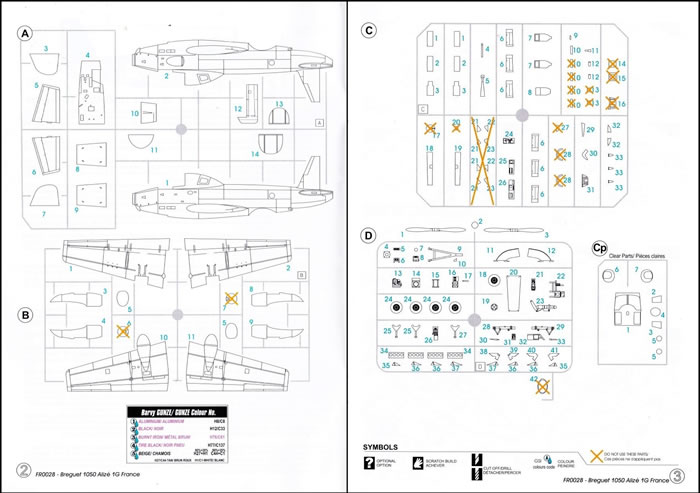
Detail colour call-outs are indicated by letters keyed to a table of colours below the parts map. Four-view colours and markings diagrams are provided within the instructions. These are nicely printed in colour, with generic colour names in English and French. Whilst a Gunze Sangyo logo is included with each diagram, the Gunze Sangyo paint numbers are only included in the key below the parts map mentioned earlier.
The Kits
Each kit contains the same single clear and five grey sprues. I shall generally use the singular ‘kit’ throughout this first look for clarity’s sake. However, to avoid distraction when focusing on the main parts I shall begin by mentioning differences between the kits:
-
Clear caps for the nose of each main undercarriage nacelles are included for the Alize IG whereas those for the ALH and ALM are solid.
-
A clear rounded cap fits the rear end of the 1G’s fuselage, whereas a solid angled end-cap is used for the ALH and ALM.
-
Optional port-hole windows apply to the two 1G boxings (FR0028 & FR0031). These require a hole to be opened in the fuselage sides just above the opening for the retractable ventral radome. Neither the instructions nor the colours & markings diagrams for either 1G boxing are clear on which marking options should have the windows. So it seems a case of depending on references to determine which aircraft had them, and perhaps when.
-
There are a variety of antennae applicable to the ALH and ALM variants that are not fitted to the 1G, and one hook-shaped example fitted to the 1G and some ALM’s, but not the ALH. All of these variations are clearly covered by the instructions.
-
The ALH and ALM have a couple of extra bulged vents to fit to the rear fuselage, no doubt associated with their updated avionics suites.
-
None of the parts on sprue-E, which has the external weapons, apply to the Alize ALH (FR0030); although many will appreciate its inclusion as a donation to their spares box. Surprisingly, the loose page containing the parts map and assembly instructions for the weapons is included with all four kits; despite it seemingly being separate so that it could be left out of the ALH kit (FR0030). As a result, the unwary may assume that the ALH can be fitted with the external weapons, unless they notice the fine print in the bottom right corner of the loose page that says “FR0028-0029-0031”, or read the aircraft history that mentions the ALH only carried weapons internally.
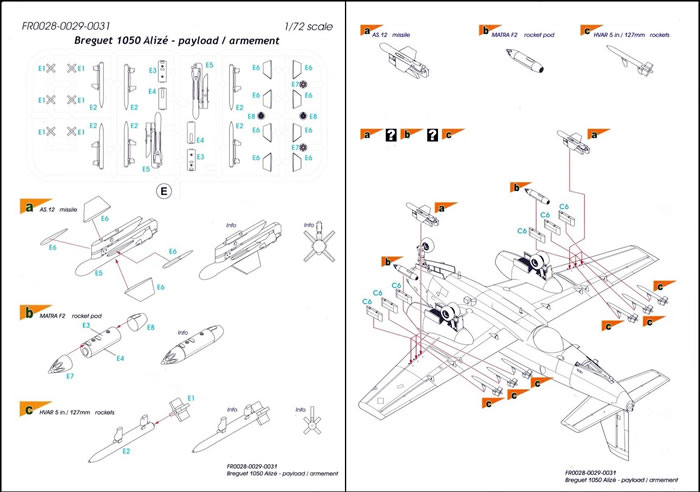
I shall now return to focus on the major aspects of the kit common to all four boxings.
The major airframe mouldings are nice and crisp with delicate and but clearly defined surface detail. Sprue gates are fine and ejector pins thoughtfully placed. A smidgeon of flash is apparent in one or two places under magnification, but can be dealt with more quickly than I took to type this sentence. Small details are also quite adequately catered for; meaning no resin or PE parts are included. The transparencies are crisp, with clear and acceptably thin canopy and windows. The Alize has a distinctive and subtle shape to its canopy and windscreen, and Azur has captured this very well.
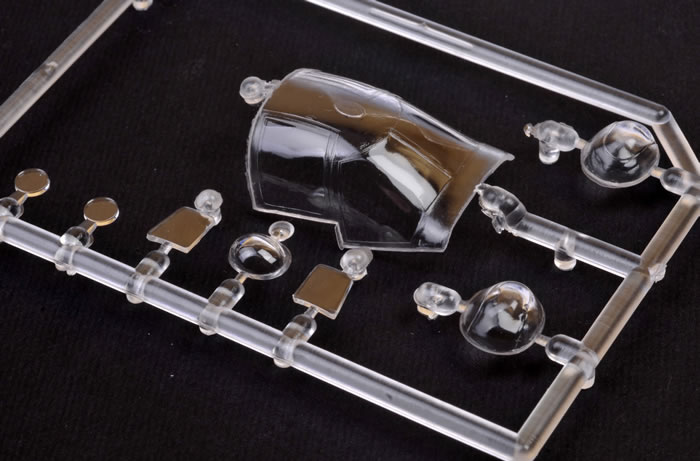
Cockpit detail is good for the scale and more than adequately represents the quite spacious flight deck and the radar operator’s controls and equipment. In fact, there is probably more detail supplied than a can be seen once assembled and finished; but it is nice to know it is there. Despite this, seatbelts from other sources will need to be added to the pilot’s and navigator’s seats for best appearance. A useful Alize ALH cockpit walkaround can be found here.
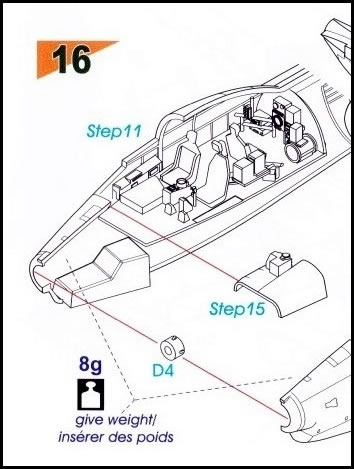
The long exhaust ducting for the Dart turboprop is nicely done. It is designed to be inserted from within the fuselage and held in place by two tabs. I would expect most will remove the tabs and insert the exhaust later after painting from the outside.
The large ventral radome can be positioned deployed or retracted. The instructions advise to fit this in place prior to closing the fuselage halves, but it may just be possible to do so after exterior painting is completed, which will reduce the need for masking since the radome is black, unlike the surrounding airframe.
Obviously, the flight-deck, cockpit coaming and nose-wheel bay must be fitted prior to closing up the fuselage; along with the 8-grams of nose-ballast mentioned in the instructions. The antenna and sensor fit varies according to version, with the ALH and ALM being more festooned than the IG. Two or four bulged streamlined vents need to be fitted to the rear fuselage according to variant. All of course require the sturdy A-frame arrestor hook.
The propeller consists of a pair of twin-blades and two-part spinner. The blades are some of the best I have seen in 1/72 injected form, being commendably thin with realistic twist varying from root to tip.
The wings are essentially conventional, although the Alize’s distinctive nacelles that incorporate the sonar-buoy bays and undercarriage wells need to be added to them. The main undercarriage has short main-legs and twin wheels, which happen to be identical to the single nose-wheel. The sonar-buoy bay doors are moulded shut, but the wheel bays include adequate internal detail, with some of the aircraft’s structure represented.
There are four separately moulded flap extension mechanisms to add to each wing, along with three weapons pylons or unguided rockets in the case of the IG and ALM boxings (blind holes need to be opened in the lower half of each wing to aid location of these).
An errata note on FRROM’s website mentions that, due to an oversight, all kits lack the pitot fitted to each wingtip, as featured in the box-art and colours & markings diagrams. These can easily be scratch-built. Note however, that the pitots incline downwards as illustrated by the image that can be viewed by clicking here.
Although the wings butt-fit to the fuselage, a small integral tab and plenty of wing-root surface area will assist in their location and fixing. The instructions include a drawing showing the correct wing dihedral. The tailplanes are one piece for each side, whilst a separate rudder fits to the tailfin.
The external weapons consist of a choice of six 127-mm rockets, two AS-12 wire-guided missiles, and two six-tube 68-mm folding-fin rocket launchers.
Overall the kit appears to be quite straightforward; I think should present few, if any, constructional problems.
Markings
Appealing schemes are provided with each boxing and are as follows:
Alize 1G France (FR0028):
-
Scheme A: No 72 of Flottille 4F during the first modification campaign, Lann-Bihoue BAN, 1966/1970.
-
Scheme B: No16 of Flottille 9F, group ALFA 1966 aboard the carrier Foch, French Polynesia, May to September 1966.
-
Scheme C: No 2 coded I, Squadron 10S (CEPA), St-Raphael, 1959/1960
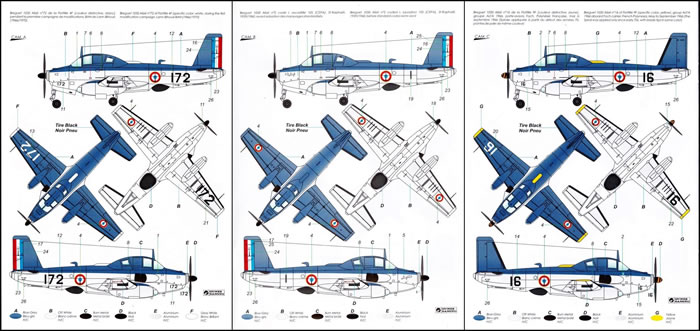
Alize ALM (FR0029):
-
Scheme A: No 42, Flottille 6F, Nimes-Garons, end 1981.
-
Scheme B: No 41, Flottille 4F, aboard the carrier Clemenceau during the "Flambeau" mission, summer 1997.
-
Scheme C: No 55, Flottille 4F, 1989 to 1996.
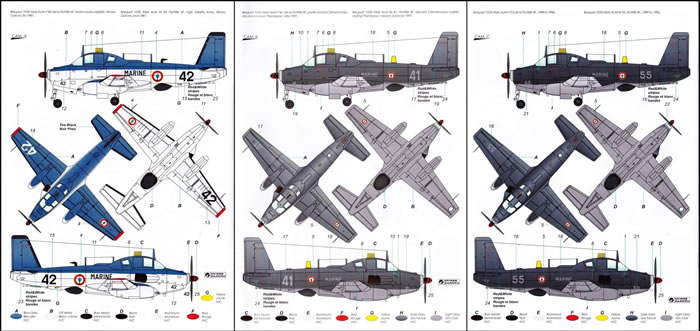
An errata note mentions that the colour keys on the applicable colours & markings guides should read: for No 42 A = Bright Blue (not Blue-Grey) and B = Bright White (not Off-White); and for Nos 41 & 55 colours H = Dark Grey and I = Light Grey) are should be low reflectance matt finish. Also, for Schemes B & C, individual aircraft numbers (decals 16 & 17) should be applied under port wing.
Alize ALH (FR0030):
-
Scheme A: No 49 of Flottille 6F, September 15th, 2000 (the shark mouth was briefly applied before its removal was ordered the same day).
-
Scheme B: No 56 of Flottille 6F, usually in BAN Nimes-Garons, during the EOLO 2000 manoeuvres in Spain (can also be finished in its retirement scheme using decals from No 55).
-
Scheme C: No 55 of Flottille 6F, September 15th, 2000 (special retirement scheme).
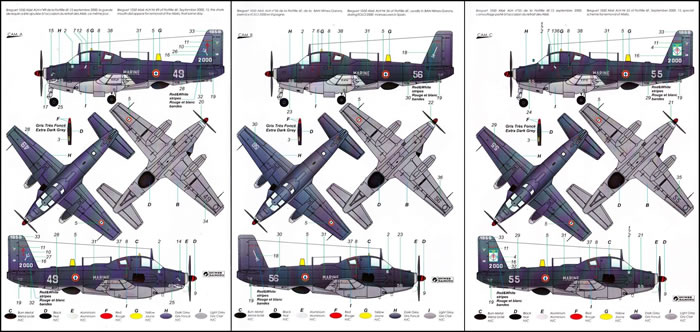
Alize 1G India (FR0031):
-
Scheme A: No 06, IN206, INAS 310 "White Cobras", aboard the carrier INS Vikrant, beginning of 1970 (alternate sized and style ‘06’ decals are provided, as two styles were applied during the aircraft’s service).
-
Scheme B: No 04, IN204, INAS 310 "White Cobras", aboard the carrier INS Vikrant, 1985 (the 24 stars on fuselage are for the years in service).
-
Scheme C: No 03, IN203, INAS 310 "White Cobras", December 1971, 10 (Gujrat).
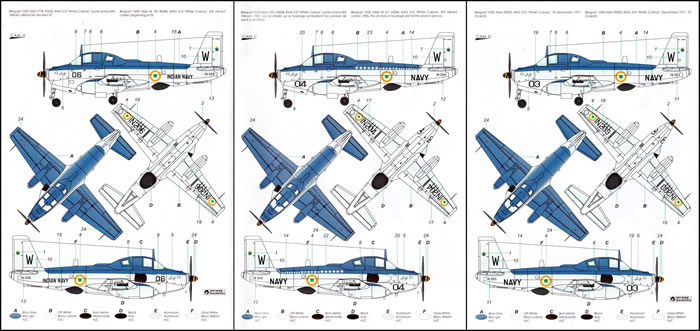
The decals appear to be excellent in all respects.
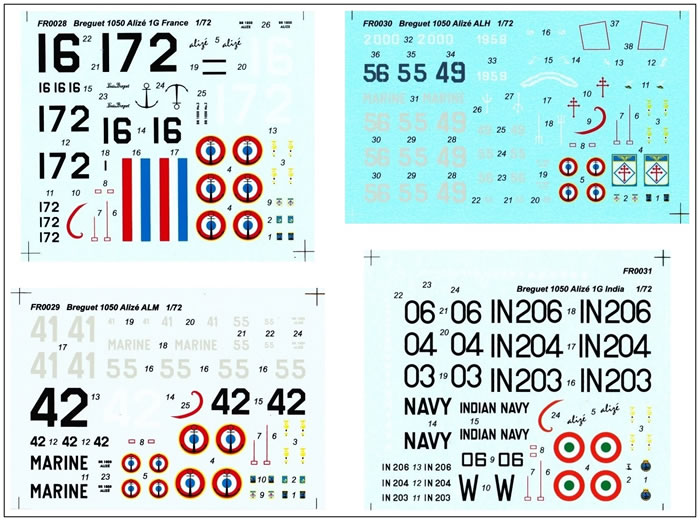
Azur serie FRROM Stockists
Azur serie FRROM is a niche line of kits produced under the umbrella of the Azur label, which is an MPM-group brand. FRROM stands for France & Romania, and refers to the types of subjects originally envisaged for this series; although it has quickly expanded beyond subjects from these two nations.
I have noticed is that various on-line shops list Azur serie FRROM either under Azur, or separately as FRROM or FRROM-Azur. Also, established Azur stockists do not necessarily carry Azur serie FRROM because of their different distribution channels. So if you are looking to buy FRROM kits be sure to check out all combinations of the brand name, and also suppliers you might not normally associate with Azur or other MPM-group products.
If in doubt contact FRROM and ask for details of your nearest stockist.
FRROM has given us the best Alize kits in the “One True Scale” by far, with a range of boxings covering several interesting variants and colour schemes.
The quality of moulding and detail provided is very good, and should result in a very nice replica when finished. I have every reason to expect that the kits will build with few difficulties.
I for one am pleased to have a good kit of this interesting aircraft; and I hope others feel the same way so that FRROM is encouraged to consider releasing more subjects only covered by Mach 2 until now.
All four boxings are highly recommended.
Thanks to FRROM for the sample kits.
Review Text Copyright © 2016 by Mark Davies
Page Created 7 April, 2016
Last updated
7 April, 2016
Back to HyperScale Main Page
Back to Reviews Page

|
